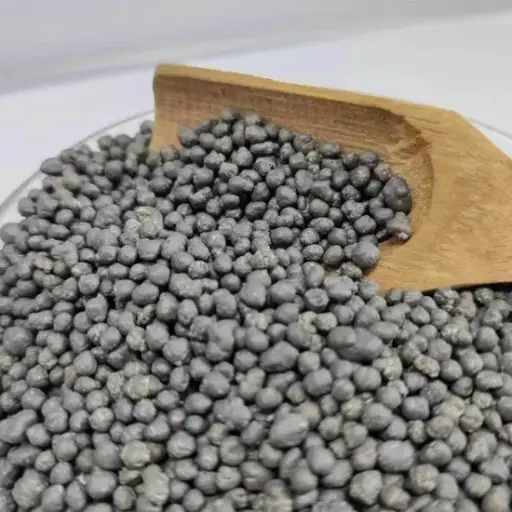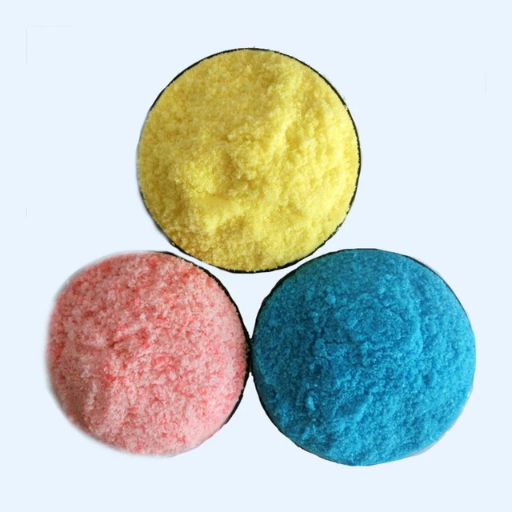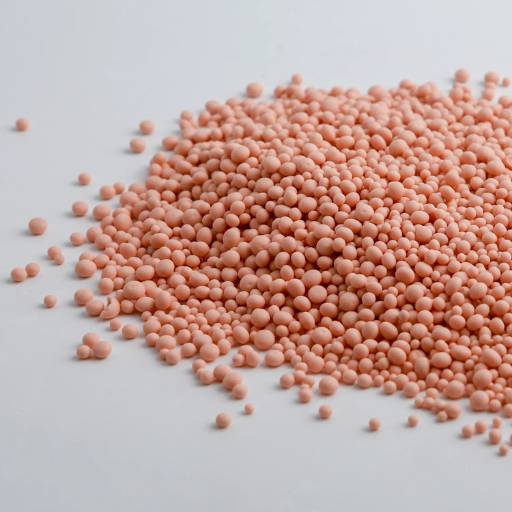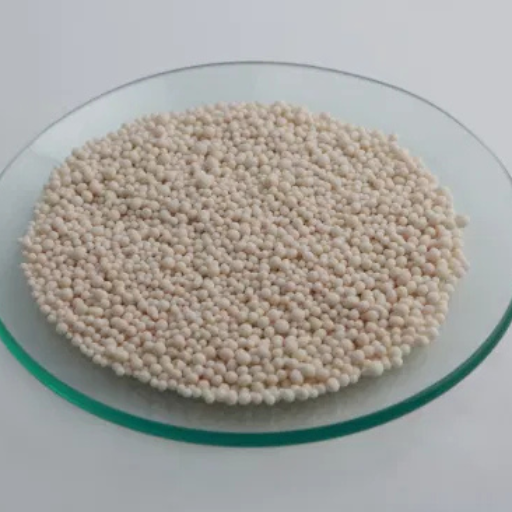Gardening enthusiasts and homeowners alike often seek reliable solutions to nurture their lawns and gardens, and one such potent ally is Triple 19 fertilizer. Known for its balanced formulation, Triple 19 contains equal parts of nitrogen, phosphorus, and potassium, each essential for robust plant growth. This type of fertilizer is versatile, catering to a wide range of plant needs while fostering lush greenery and vibrant blooms. Whether you are new to gardening or an experienced horticulturist, understanding the benefits and application of Triple 19 fertilizer can significantly improve your gardening success. In this article, we will delve into the specifics of its composition, how and when to apply it, and the transformative impact it can have on your outdoor spaces.
What is 19-19-19 Fertilizer?

How does the method of application of the so-called ‘triple 19’ operate?
Triple 19 fertilizer works by providing an equal quantity of nitrogen, phosphorus and potassium to plants at a 19% concentration. These essential nutrients come in the form of long chain carbohydrates and proteins. In simple, Nitrogen is essential for leaf and budding formation, thereby enhancing and deepening the green pigments of the plant, making it a sign of its healthy growth. Phosphorus is responsible for the development of the root system and flowers and fruit, therefore the plant’s efficiency increases. Potassium enhances the health and strength of the plant and its ability to combat and cope with diseases, insects, and other adverse conditions such as drought. The even balance of nutrients available helps it to be of use to numerous plants and ensure that none of them fails to fully develop towards its well-nourished and health casters garden or lawn.
Main ingredients of 19-19-19 fertilizer
In the analysis of 19-1919 fertilizers, nitrogen, phosphorus, and potassium, which are also known as the major nutrients, are found in an equal proportion of 19% each for NPK. Nitrogen is usually supplied as ammoniacal nitrogen in the form of ammonium nitrate or ammonium sulfate to improve the green colour and mass of the leaf. Phosphorus may be in Diammonium phosphate or mono ammonium phosphate form for blossoming and root formation functions. Potassium is also used as potassium Chloride or potassium sulphate, which aids in bone health and disease fighting systems homeostasis. These raw materials are optimized to deliver quality and as such the fertilizer is ideal for general land and horticultural purposes.
Why the N-P-K ratio is a necessity?
The N-P-K ratio is of great importance because it depicts the proportion of nitrogen (N), phosphorus (P), potassium (K) in a fertilizer. It is a well-known fact that each of these nutrients is important for the growth of any plant: nitrogen supports stem foliage, phosphorus encourages the roots, flowers and fruits and potassium increases its vitality and stress coping ability. Therefore, knowledge of the N-P-K ratio helps the gardeners and farmers to be able to apply the most suitable fertilizer in relation to the particular plants and various stages of growth of the plants. Most optimal nutrition for different types of plants growing under various conditions is reflected in a balanced ratio of N-P-K, for example in 19-19-19 fertilizer.
How to Apply 19-19-19 Fertilizer Effectively?
When is the appropriate time to make use of 19-19-19 fertilizer?
The appropriate time to use 19-19-19 fertilizer would depend on the type of plants and their growth stage. Usually, it is most beneficial to use this balanced fertilizer in the early morning or late afternoon when the soil is already wet and temperature low. In terms of use on lawns, the earliest spring or the earliest fall would be the best time so that the root system could develop prior to weather changes. For flowering plants and vegetables, it is recommended to use the fertilizer at the beginning of the planting season to boost the growth and productivity. One should always consider the specific recommendation on each plant type in order to avoid over fertilization and get the maximum benefit.
How much fertilizer can I apply on a square foot?
The rate of application of 19-19-19 fertilizer varies depending on the demands of the plants in question and the available nutrient content in the soil. As a thumb rule, it is advisable to use about 0.5 to 1 pounds of 19-19-19 fertilizer per 100square foot of garden space. For lawns, it is usually recommended to take a thumb rule of 1 pound for 1000 square feet. However, it is also essential to do a soil test first and revise the rate accordingly to prevent adverse effects such as nutrient run-off and other related issues for healthy plant growth and development.
Can I apply 19-19-19 on the lawn?
Yes, 19-19-19 fertilizer can be applied into a lawn. It is a balanced fertilizer which contains the three nutrients in equal total quantities and therefore can be effective for most lawn applications especially when the soil is deficient in most of the major nutrients. Although this fertilizer’s balanced method might also mean that specific goals such as correcting a nitrogen deficiency problem will not be met if that is the case. Your lawn has specific requirements that must be taken into account when calculating what level of nutrients should be used or enhanced for the best results. It is important to follow the recommended application rates to minimize chances of over-fertilization thus damaging the lawn.
Benefits of Using 19-19-19 Fertilizer

How does 19-19-19 help in enhancing the growth of the plants?
19-19-19 fertilization enhances plant growth as it offers a reasonable proportion of the other three basic nutrients which include nitrogen, phosphorus and potassium. Nitrogen helps in the outward development of plant tissues and specifically leaves whereas phosphorus helps in the growth of the root and production of buds and fruits. Potassium completes the cycle by promoting general plant health; disease and stress resistance. Such a proportion is well adopted in most garden applications for the healthy formation and development of plants. Use over time, more so in the right quantities guarantees that sodic nutrients are readily available in order to facilitate growth spurts in the short run as well as the health of the plant in the long run.
What crops are enriched with triple 19?
Fertilizer containing triple 19 is very advantageous to a variety of plants including vegetables, flowering and non flowering ornamental plants, trees, and shrubs. It is very useful in vegetable gardens with several categories of plants because of its balanced nutrient ratio. In the case of the vegetable garden, it enhances the excellent growth of leafy vegetables like lettuce and spinach, as well as tomatoes and peppers, which are fruiting plants. Ornamental plants and trees, such as flowering plants and non-flowering plants, also grow happily with adequate nitrogen, potassium, and phosphorus, which enhances flowering and foliage. Besides, the landscape plants viz shrubs and trees get advantage of this formulation of triple 19 to develop strong root systems and maintain during the active growing season.
Is it possible for 19-19-19 fertilizer to have positive effects on soil health?
19-19-19 fertilizer can help promote better soil health as it provides the essential nutrients that plants require, which allergies benefit soil ecosystems. Growing plants with the balanced nutrients will eventually produce more organic matter from root systems and plant residues that are good for soil structure. It does not mean though that these high N-P-K ratios are not effective as soil conditioners, if these amendments are always combined with organic matter in the long run. Routine inspection and balanced application are essential in the control of nutrient loss to avoid worsening the health status of soils in the long term.
Comparing 19-19-19 with Other Fertilizer Options

What is it that sets apart 19-19-19 from other balanced fertilizers?
To begin with, a significant difference between 19-19-19 and other balanced fertilizers is the nutrient composition and how they are supplied. For instance, in the case of 19-19-19 all the three primary nutrients, nitrogen, phosphorus, and potassium are uniformly provided whereas in other balanced fertilizers these macronutrients may be presented in different proportions that cater for specific plant type or the developmental stage. Also, differences in the sources of the nutrients may alter their time of effectiveness with respect to plant use, some fertilizers even coming up with water soluble slow release units for long duration on need basis. The environmental conditions and target planting activity may vary in such factors as application rate and usage time. Knowing these variations enables the gardeners to choose the right fertilizer for their particular gardening requirement.
When can I opt for starter fertilizer as a substitute for 19-19-19 fertilizer?
The use of a starter fertilizer, as opposed to 19-19-19, concerns typically the circumstances under which a crop is being planted or particular requirements for the nutritional needs of the crop at an early stage of growth. Starter fertilizers have more phosphorus, which is very important for quick root establishment of new plants or seedlings. These fertilizers are very useful when more stress is laid on seeds or new transplants, as phosphorus leads to better root systems and early growth. On the other hand, 19-19-19 that has an equal proportion of nutrients is useful for generalized or widespread maintenance during the growing period for wider, broader use. Where a targeted outcome is to encourage better root formation in the early stage of development, and the soil test shows very low levels of phosphorus, it would be prudent to use a starter fertilizer.
Choosing the Right 19-19-19 Fertilizer Product

What essentials are critical in a bag of 19-19-19?
When weighing up the options of buying a particular bag of 19-19-19 fertilizer, I look for a few things so that the fertilizer will be of the best use, and the results will be optimal to my gardening needs. First, I look at the ingredient label to see which micronutrients if any will complement the fertilizer required such as iron, sulfur or even magnesium depending on the type of plants’ health requirements. Next, I assess the nature of the fertilizer whether it is water-soluble or in granular so that I can use the appropriate application form about the gardening arrangement. Moreover, I try to adhere to the company specifications indicating the application rate and application time to synchronize with the garden’s growth stage and climatic factors. Thus, I will be in a position to choose a product that supports the nutrient needs of my garden and enhances plant health at different growing seasons.
How can the label of a fertilizer be comprehended?
Upon receiving a label for a fertilizer blend, I always look for three main numbers sometimes referred to as the N-P-K ratio which stands for nitrogen, phosphorus and potassium as their names suggest. These transcendental numbers denote the weight percentage of each nutrient in the fertilizer. Thereafter, I move on to consider some micronutrients if they are included such as calcium, sulfur, or iron as they can be advantageous depending on the different needs of your plants. I also take into account any proposed recommendations on application rates and intervals as applicable to some fertilizer products adjusting my way of doing things towards the needs of my garden. In addition, I consider the form of the fertilizer, for instance, granular, powdered, water-soluble, etc. which determines how and when I would administer fertilizers to my plants. By knowing these components, I eliminate chances of making mistakes in choosing the correct fertilizer blend for ensuring the health and growth of the plants in question.
Reference sources
- 50lb Premium 19-19-19 Fertilizer – Triple 19 Fertilizer – This source discusses the essential nutrients provided by Triple 19 fertilizer and its benefits for lawns.
- Is 19-19-19 the perfect forage fertilizer? – This article explores the use of balanced fertilizers like 19-19-19 and their applications in agriculture.
- Maximize Plant Growth with NPK 19:19:19 Fertilizer – This blog post highlights how the balanced formulation of NPK 19:19:19 supports healthy plant growth.
These sources should help validate the information in your document.
Frequently Asked Questions (FAQs)

Q: Is it possible to use triple 19 fertilizer for pastures and hay production?
A: Definitely, triple 19 fertilizer is also applicable in pastures and hay production because it has nutrients that enhance root system and other parts of the plant, leading to better quality forage.
Q: How much of the triple 19 fertilizer should be applied on a single application?
A: The amount applied for triple 19 fertilizer is crop and soil specific because fertility varies from one soil type to another. Farmers usually apuset at 50 to 200 pounds per acre, though soil test results are recommended for optimal application.
Q: Does it make sense to use triple 19 fertilizer on lawn and turf areas?
A: Yes, triple 19 fertilizer can be used as lawn fertilizer and helps develop turf and its color. For best results, this is best done in spring and fall.
Q: Where can I Buy triple 19 fertilizer in bulk?
A: You can buy bulk triple 19 fertilizer from agricultural supply stores, garden centers, and fertilizer manufacturers. Most suppliers also provide delivery for the purchased goods.
Q: What are the advantages of applying triple 19 fertilizer?
A: The benefits of using triple 19 fertilizer include improved nutrient availability, enhanced root growth, and healthier plants. It promotes overall nutrient balance in plants and therefore results in better yields and healthier crops.
Q: Are there any special considerations in relation to triple 19 fertilizer application?
A: Yes, it is essential to adhere to the manufacturer’s guidelines regarding the rates and methods of applying the fertilizer. There is always a risk of excessive application which may lead to nutrient leaching and pollution thereby control measures have to be taken.






